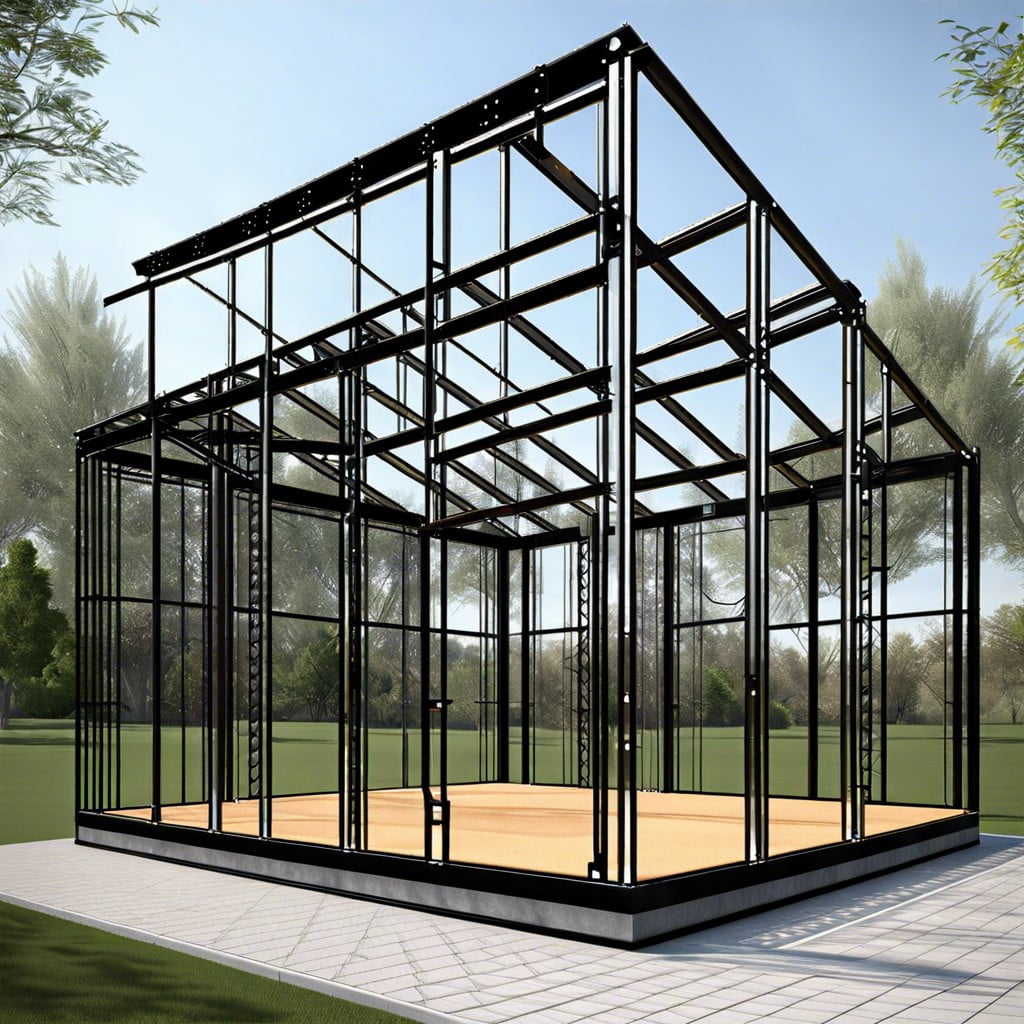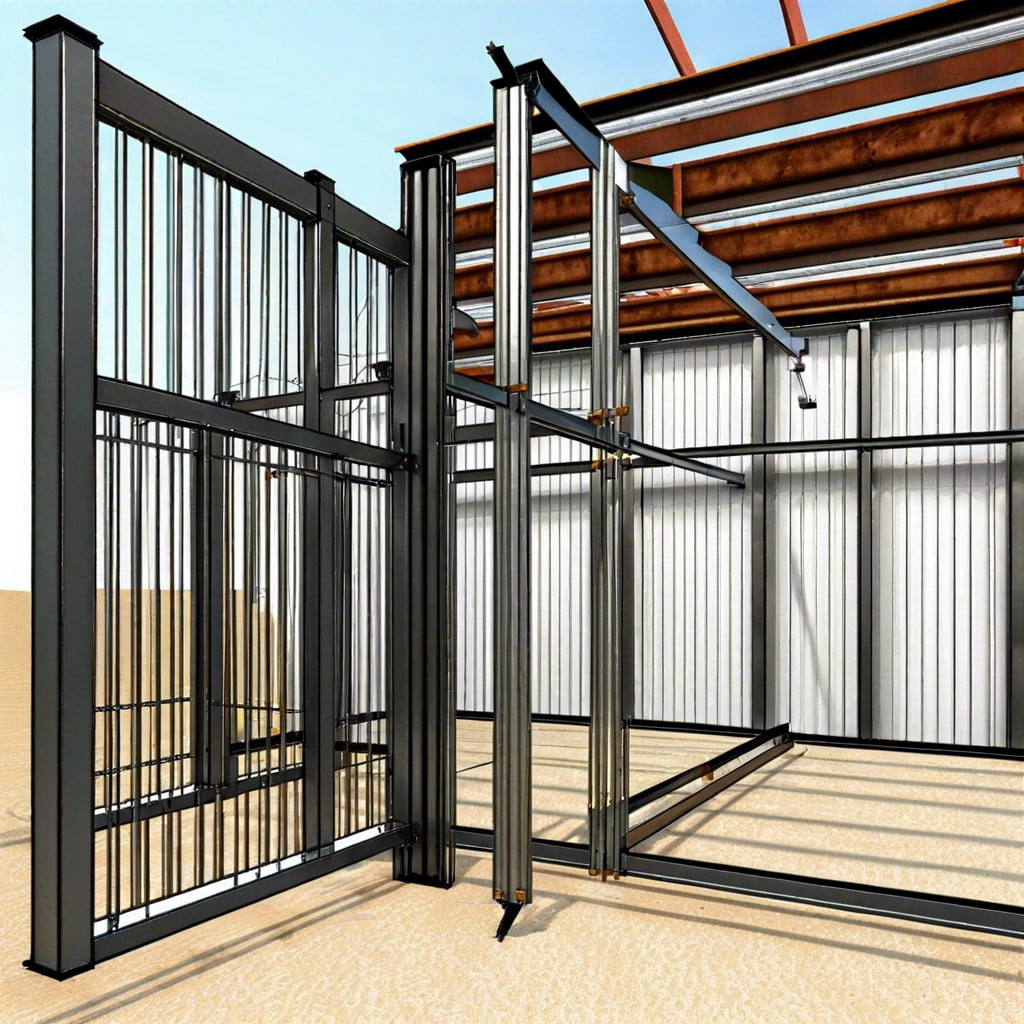Yes, polymers can be used as a replacement for wood in construction.
Polymer materials have been used in construction for many years, but their use as a replacement for wood is becoming increasingly popular.
We will explore the advantages and disadvantages of using polymers instead of wood in construction applications.
We’ll look at the benefits of polymer materials compared to traditional wood, such as strength, durability, and cost savings. We’ll also discuss potential drawbacks to consider before making this switch.
We’ll review examples of successful projects using polymers instead of wood in their construction process.
Key takeaways:
- Polymers can replace wood in construction
- Polymers offer strength, durability, and cost savings
- Polymers are lightweight, weather-resistant, and easily recycled
- Polymers come in various colors and textures for design flexibility
- Advancements in polymer manufacturing and 3D printing shape the future of construction
Wood in Construction

Wood is a natural material that has been used in construction for centuries. It is strong, durable, and relatively easy to work with.
Wood can create structures such as houses, bridges, and furniture. It is also a renewable resource since it can be harvested from trees without damaging the environment.
However, wood has some drawbacks when it comes to construction; it can rot or warp over time due to exposure to moisture or extreme temperatures, and it may require regular maintenance, such as painting or staining, to protect against these elements.
Wood is not always available in large enough quantities for larger projects like skyscrapers or bridges.
For these reasons, many people are looking for alternatives that offer similar benefits but with fewer drawbacks. Polymers are one option that could replace wood in specific applications within the construction industry.
Construction Process
Construction typically requires using wood, steel, or concrete materials to create the desired structure. In recent years, polymers have been used increasingly in construction due to their durability and cost-effectiveness compared to traditional materials like wood.
Polymers are synthetic materials that can be molded into various shapes and sizes for construction projects. They are lightweight yet strong enough to withstand extreme weather conditions and provide excellent insulation properties.
They can be easily recycled, making them an environmentally friendly option for construction projects.
Other Building Materials
Building materials are used to construct buildings, such as wood, concrete, steel, and other materials. Polymers are a material that can be used in place of traditional building materials like wood.
Polymers are made up of long chains of molecules that can be manipulated to create different properties and characteristics. They have many advantages over traditional building materials, such as being lightweight yet strong, durable, and resistant to weathering.
Polymers can be produced from renewable resources like plant-based plastics or recycled plastic waste, making them an environmentally friendly option for construction projects.
Substitutes
Substitutes are materials that can be used in place of another material. In the context of using polymers as a replacement for wood in construction, substitutes refer to materials that can be used instead of wood.
Polymers are one such substitute and have been increasingly used in construction due to their durability and cost-effectiveness. They are also more resistant to weathering than traditional wood, making them an ideal choice for outdoor structures.
Polymers come in various colors and textures, allowing for greater design flexibility when constructing buildings or other structures.
Synthetic Materials
Synthetic materials are artificial substances that can be used as a replacement for wood in construction. These materials are typically made from polymers, which are long chains of molecules that can be manipulated to create different types of products.
Synthetic materials have many advantages over natural wood, such as being more durable and resistant to weathering, rot, and pests. They also require less maintenance than traditional wood products and can often be recycled or reused after their initial use.
Synthetic materials are lighter than natural wood, making them easier to transport and install onsite during construction projects.
Environmental Impact of Wood Versus Polymer Construction
Wood and polymers both have their own environmental impacts when used in construction. Wood is a renewable resource, as trees can be replanted to replace those that are harvested.
However, deforestation for timber can lead to habitat loss and contribute to climate change. On the other hand, polymers are derived from fossil fuels and their production releases greenhouse gases into the atmosphere.
When it comes to durability, wood requires regular maintenance such as sealing or painting to protect it from moisture damage and decay. Polymers, on the other hand, are known for their resistance against rotting, termites, and weathering effects.
In terms of recyclability at end-of-life stage of buildings or structures made with these materials; wood is biodegradable while some types of polymers may take hundreds of years before they fully decompose in landfills.
Innovations in Polymer Manufacturing for Construction
These advancements have made it possible to create polymers with enhanced strength, durability, and versatility for various construction applications.
One notable innovation is the development of fiber-reinforced polymers (FRPs). FRPs are composite materials that combine strong fibers such as carbon or glass with a polymer matrix.
This combination results in a material that is lightweight yet incredibly strong and resistant to corrosion. FRPs can be used as structural elements like beams and columns, offering an alternative to traditional wood or steel components.
Another exciting advancement is the use of 3D printing technology in polymer construction. With 3D printing, complex architectural designs can be created using specialized printers that deposit layers of molten polymer one on top of another until the desired shape is formed.
This method allows for precise customization while reducing waste material compared to traditional manufacturing processes.
Furthermore, researchers are exploring ways to improve fire resistance properties in polymers used for construction purposes. By incorporating flame-retardant additives into their formulation or modifying their chemical structure at a molecular level, scientists aim to enhance safety standards without compromising other desirable characteristics like flexibility and ease of installation.
These innovations not only offer alternatives but also address some limitations associated with wood-based constructions such as susceptibility to rotting, warping due to moisture absorption or termite damage over time.
Health and Safety Considerations of Polymer Construction
One key aspect is fire resistance. While wood has a natural ability to resist fire due to its charring properties, polymers can be engineered with flame-retardant additives that provide similar protection.
However, it is crucial to ensure that these additives are properly incorporated during manufacturing and installation processes.
Another consideration relates to off-gassing of volatile organic compounds (VOCs). Some polymer materials may release VOCs over time, which can have adverse effects on indoor air quality and human health.
To mitigate this risk, it is essential for manufacturers to adhere strictly to regulations regarding VOC emissions.
Proper handling and disposal procedures should be followed when working with polymer-based construction materials. This includes using appropriate personal protective equipment (PPE) during installation or maintenance activities involving polymers.
Case Study: Successful Polymer-based Building Projects
Several successful case studies highlight the advantages of using polymers for various building applications. One such example is the construction of a large-scale commercial complex using polymer composite materials instead of traditional wood framing.
The project not only demonstrated the durability and strength of polymers but also showcased their versatility and aesthetic appeal. Another noteworthy case study involved the use of polymer-based roofing tiles that offered superior weather resistance, longevity, and reduced maintenance compared to conventional wooden shingles.
These examples illustrate how polymers can effectively replace wood in construction while offering numerous benefits across different aspects such as sustainability, performance, and cost-effectiveness.
The Future of Polymer Use in the Construction Industry
Researchers and engineers are constantly exploring new ways to enhance the properties of polymers, making them even more suitable for construction applications.
One area that holds great potential is 3D printing with polymers. This innovative technique allows for complex structures to be created quickly and efficiently, reducing waste and labor costs.
With further advancements in 3D printing technology, we can expect to see more widespread adoption of polymer-based construction methods.
There is ongoing research into developing stronger and more durable polymers that can withstand extreme weather conditions such as hurricanes or earthquakes. These resilient materials have the potential to revolutionize building design by providing enhanced safety measures.
Furthermore, as sustainability becomes a key focus in the construction industry, there is growing interest in using bio-based polymers derived from renewable sources instead of traditional petroleum-based ones. These bio-polymers offer similar performance characteristics while being environmentally friendly.
It’s clear that polymers have a bright future ahead within the realm of construction. As advancements continue and new possibilities emerge through research and innovation efforts across various fields like material science engineering or architecture – we can anticipate seeing an increased utilization of these versatile materials throughout different stages within our built environment.
FAQ
What are polymers used for in construction?
Polymers in construction are utilized in various areas including flooring, windows, cladding, rainwater systems, piping, waterproofing membranes, seals, glazing, insulation, and signage.
Why are polymers not used in construction?
Polymers are not extensively used in construction due to their incompatibility with non-plastic components like concrete and steel reinforcements, which can result in damage.
Can plastic replace wood?
Yes, plastic, specifically recycled plastic lumber, can replace wood as it can be used as an alternative to wood in construction.
What are polymer products in building construction?
Polymer products used in building construction include expanded polystyrene for concrete moulds, insulation, and packaging, polycarbonate for lighting housings, hot water system fittings and glazing, polyester for FRP bridge sections, cladding panels, sinks, surfaces and coatings, and polyethylene for foam underlay, damp-proof membranes and coatings.
How do polymers enhance the durability of traditional construction materials?
Polymers enhance the durability of traditional construction materials by providing increased resilience against weathering, corrosion, and physical stresses, thereby contributing to long-term structural integrity.
What are the environmental implications of using polymers in construction?
The use of polymers in construction has environmental implications, including potential pollution during manufacturing and disposal, but they also contribute to energy efficiency due to their insulating properties and durability.
Could polymers be the key to sustainable, eco-friendly building practices?
Yes, polymers can significantly contribute to sustainable, eco-friendly building practices due to their durability, recyclability, and energy-efficient production processes.
Recap




